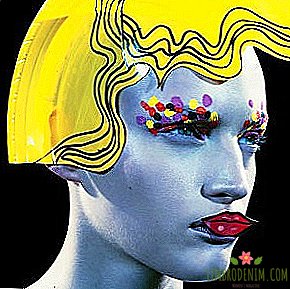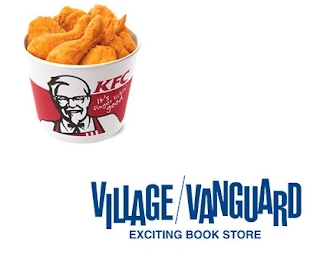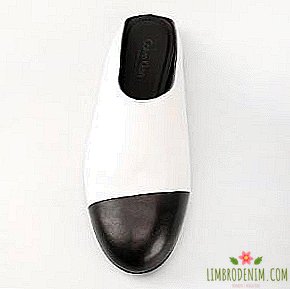Eco-friendly brands: 10 western and 5 Russian
Stella mccartney
(Great Britain)






Stella McCartney is rightfully considered the pioneer of eco-movement in the field of luxury fashion, because ethical principles - not to use leather and natural fur, to constantly increase the presence of organic cotton, forever abandoning potent dyes - she adheres to since the foundation of the brand in 2001. With her social responsibility, McCartney, who did not consume meat, and together with her father, Paul, initiated the Meat Free Monday program, went so far as to answer the question of what to do, if you got a fur vest from your grandmother, without a word: do not show - otherwise you advertise the fur! " In fairness it should be noted that the leather substitute, which is used by Stella, is not inferior to natural material. The amazing properties of a fake, which, by the way, costs the company 70 percent more than the original, Stella creates from a combination of elastic tagflora (material from acrylic and polymer fibers), durable vegan (a mixture of polyurethane and cotton) and recyclable plastic.
McCartney even hooked Gucci Group, which owns its brand, on eco-problems: from now on, the company's offices are working on wind energy.

People tree
(UK-Japan)






Unlike most ekobrendov, People Tree, which emerged in 2001, quickly gained popularity - in no small measure due to the personality of its creator, Safia Minni, who is considered to be the founder of the Fair Trade movement. People Tree does not tolerate artificial colors and synthetics, preferring recycled materials. Brand items are made exclusively in the countries of Southeast Asia. And if until recently People Tree was only distinguished by ethicality, then cooperation with Thakoon, Topshop and actress Emma Watson, which Safia itself sent to Bangladesh, seems to correct the situation with the product itself. Only one question remains: How can a hand-woven tunic made from 100% wool, made by hand in Nepal with full observance of fair trade laws, cost 70 pounds?

Patagonia
(USA)

Far from everyone will be able to deal with Patagonia in terms of manufacturability: the number of patents attributable to a company producing clothing for sports and recreation is measured in two digits. And most patents are eco-friendly! Refusing in 1996, the use of conventional (ordinary) cotton, Patagonia began to develop new high-tech fabrics, mainly based on polyester from recycled plastic bottles and end-of-life things. Another company's know-how is the special water-repellent technology of the Deluge, which is used to handle outerwear, thereby at least twice extending its life. And this is only part of the work done by climber and eco-activist Yvon Chouinard, about which Chris Malloy even made a 180º South film. Needless to say, jackets, parks, as well as cashmere brand that has recently appeared in the arsenal are produced in the framework of the principles of sustainability and fair trade?

Ciel
(Great Britain)




Ciel attracted attention even before, in 2007, Sarah Ratti, known for her work with the Conscious Earthwear brand that honored the Victoria and Albert Museum, won the Ethical Fashion Awards. Even then, fans of the brand could record Sienna Miller, Eva Herzigova and Cate Blanchett, and jackets, dresses and feminine, almost airy knitwear with French spraying (ciel translated from French means “sky”) appeared on the pages of Italian and British Vogue. Over the past three years, Ciel has acquired a line of organic cosmetics and underwear. In order not to waste precious eco-fabrics, Sarah Ratty established non-waste production (assuming total upcycling of knitwear remains), not only from organic cotton, but also from alpaca, silk and flax. As for the prints, of which there is a great variety in the Ciel collections - namely, T-shirts and dresses are in particularly active demand - they are applied with dyes that do not contain nitrogen harmful to the skin. But it is known that to create one T-shirt in the usual way requires about 7 tablespoons of chemicals.

Deborah Lindquist Eco Fashion Brand
(USA)




Hollywood simply could not stay away from the eco-trend, and it was well felt by the graduate of Parsons School of Design Deborah Lindquist. From the east coast, where she managed to get a clientele like Sarah Jessica Parker and Gwen Stefani, the girl moved to Los Angeles. In her own studio, she creates eco-friendly clothing for Hollywood stars and their dogs. Working on Deborah Lindquist Eco Fashion Brand, Deborah is trying to marry eco-friendly with couture, and judging by the fact that she recently launched a collection of "green" wedding dresses, she succeeds.
A big fan of vintage and recycled fabrics and accessories, Deborah nevertheless pays great attention to developments in the field of creating materials of organic origin. So, in the penultimate, visually ambiguous collection of Rocker Girl Meets the Gypsy there are hemp, organic wool, alpaca and silk; and for the next they are ready soy silk, ingeo (something like polyester of plant origin) and siselles - cellulose with the addition of seaweed enriched with silver ions.

Enamore
(UK-Canada)



Initially, under the Enamore brand, Jenny Ambrose produced women's clothing from vintage fabrics, and still remembers that the first thing she sold was a beach top made from the curtains of the 60s. However, the designer quickly realized that underwear was in the greatest demand, and instantly reoriented her studio in Bath to the Hollywood glamor in the style of the 50s. After the Estethica exhibition at London Fashion Week, Ambrose was finally convinced of the fairness of her decision. Despite the high cost of linen produced from fabrics of organic origin (mainly bamboo, cotton, silk and soybeans), Jenny’s business is growing rapidly. Fabrics are purchased from certified suppliers in Turkey, the USA and England, and the fact that they cannot be used in the production process of the collection is given to novice designers, with whom Jenny has established close contact thanks to her teaching activities.
Currently, Ambrose plans to move production to India and return to his native Vancouver, to enter the North American market from there. Fortunately, Enamore pin-up underwear is already sold not only in London and Milan, but also in Tokyo and San Francisco.

Melissa
(Brazil)









The world-famous brand of the Brazilian company Grendene, which managed to make wearable polyvinyl chloride shoes back in 1979. After Barneys in New York bought 2,400 pairs of such shoes in 1982, the phrase jelly shoes no longer seems to be something from the field of clothing for the beach. The peculiarity of Melissa shoes is the fact that it is produced from PVC of a new generation - Melflex - monoplastic, obtained as a result of recycling and easily recycled. Thanks to Melflex, the Melissa brand, in fact, solved the main problem of plastic shoes, making it comfortable, breathable, hypoallergenic and non-toxic. The process of production itself cannot be called toxic: 99% of waste, including water, dyes and plastic itself, are also recycled. Melissa attracts renowned designers like Vivienne Westwood (for Anglomania), Alexander Herchkovich and Jean-Paul Gautier to work. The latter presented his model on the straps quite recently, last summer.

Katharine E Hamnett
(Great Britain)










For Katharina Hamnet, design has always been a means of political expression: it’s enough to recall a T-shirt with the inscription 58% DON'T WANT PERSHING, which she donned to meet Margaret Thatcher, protesting against the deployment of missiles in England. However, she did not notice the logs in her own eye until the end of the 90s, until she traveled to Mali, on a tour of cotton farms. Horrified by what she saw, Katharina immediately launched a campaign to nurture the industry, but, realizing the vanity of her own efforts, she simply broke off contracts with all suppliers.
In 2004, Hamnett re-launches its brand - this time on ethical terms (it’s not for nothing that the letter E appears in its name). Since then, Katharina has dealt only with organic cotton produced in accordance with fair trade principles and with suppliers worthy of her trust. And most importantly - from now on, she fully controls production and cooperates only with like-minded people. So, this year the designer created a line of jewelry from "ethically mined" gold and diamonds for the brand Cred - the first European fair-trade jewelry retailer, and also presented a capsule collection of beachwear for Yooxygen - a joint project of Yoox.com and the International Green Cross. It is worth noting that Katharina’s hostility and harsh statements about the fashion community are reciprocated by her.

Ada zanditon
(Great Britain)








Ada Zanditon is a real socialite of the world of eco-mode. Her collections, which, by the way, are not so many, are distinguished by exquisite forms (experience in Gareth Pugh and Alexander McQueen affects), and the business is the most environmentally friendly approach. Things are sewn individually, which allows economical use of organic fabrics used in production, and the choice in favor of inorganic materials is possible only if they cannot find an adequate natural replacement.
Since its inception in 2008, Ada has been working only with trusted suppliers: in particular, for the spring-summer collection, she ordered silk from Vanners, a small weaving manufacture in Suffolk, which has existed since 1740. At the same time, the designer managed to work with the artist Kate Williams, famous for her recycled glass accessories. Zanditon and Williams have prepared a line of geometric accessories especially for the London Fashion Week. Perfectionism in everything is the credo of Ada, following the example of Stella McCartney stuffing her studio with energy-saving technologies and not carrying azo dyes. These sources of skin cancer Zanditon, which has become popular in Belgium, the United States and in their homeland, hates more than anything else.

Mark Liu
(Australia-United Kingdom)





Chinese-born Australian Mark Liu is the creator of the innovative method of zero waste, which involves fundamental changes in clothing design and, as a result, the restructuring of the mechanism of the entire industry. Mark for a long time investigated the technology of production of nanofabrics that do not have a negative impact on the environment. But as a result, having already moved to London, he presented at the Fashion Week a radical solution to the problem of waste in the industry, which, according to experts, makes up from 15 to 20 percent of the total number of consumable fabrics. An almost seamless technique is based on cutting out a common piece as the model's skeleton, which is sewn up at the expense of the remaining patches. Computer screening allows to guarantee production zero waste to the designer: at first patterns are distributed on virtual fabric and only then scissors are taken in hand. As for the design itself, Mark Liu is a fan of geometric rigid forms and draperies. Why - it's easy to guess.

5 Russian brands with an eco-friendly approach to production and comments from their designers and representatives
Norsoyan
On the wave of increased interest in the prefix nano-, certified biochemist Lyudmila Norsoyan took up the study of technological materials based on steel, coal, copper and Kevlar - a material that was originally used to reinforce tires. However, the natural, organic color knitwear still remains Ludmila's business card.

| Ludmila Norsoyan, designer of the brand Norsoyan: In a conversation on eco-friendly clothing and accessories, it is necessary to immediately agree that any modern production, including clothing, is in antagonistic relations with the environment. That is why the label 'eco' takes place as a resounding, but empty declaration of socially responsible behavior, a demonstration of involvement in advanced thinking circles, a marketing move for sellers and advertisers who are solely concerned with sales, as well as a kind of indulgence for a number of manufacturers. From the point of view of preserving the environment, so-called eco-clothing is nothing different from clothes produced in a conventional way. Clothes, like sturgeon, are either of good quality or bad! It can be made either from natural fibers, or from artificial and blended fibers, and in both cases it can be of both high and terrible quality. Another option is that clothes can be produced from recycled materials, and then they are definitely of poor quality. If we talk about consumers, the typical Russian buyer does not pay any attention to the principles of eco-friendly clothing. Not only that he, that the seller is equally drowsy in matters of quality, blindly believe everything written, unable to distinguish between natural, artificial and blended materials. Modern high-tech materials are also not comprehended neither by the Russian manufacturer, nor by the Russian seller, nor by the Russian buyer, although smart technologies in clothing are already used everywhere. In the production of knitwear, I use both traditional and ultra-modern nanotechnological materials and production technologies. In my industry, the intricacies of the global fashion industry are most clearly visible. In Japan, we produce knitwear from cashmere grown in Tibet, in Russia - knitwear from mohair grown in South Africa and processed in Italy, as well as knitwear from nanotechnological fibers developed in experimental laboratories in Switzerland and Korea and produced in Germany and Austria. Regardless of the artificiality or naturalness of raw materials, I deal only with selected materials, only first-class technologies, and operate only on rationally justified production and sales scales. In my opinion, to produce and sell only what is necessary is the most honest way of dealing with the environment. |
|

Biryukov
Petersburg designer Oleg Biryukov excluded animal fur from his everyday life.





Biryukov FW 2011
| Oleg Biryukov comment: I am for the ecology with both hands. I believe that this is one of the very important areas in modern life, not only in clothing, but also in food, architecture, and transport. I would with great desire use recycled fabrics, vintage and newest materials. But, unfortunately, at present these materials are practically unavailable in our country, they are not produced. In my own collections and production, I try to focus on natural materials - flax, cotton, silk, wool, the production of which is most environmentally friendly. I know that they cause minimal damage to the environment, both in production, in use, and during disposal. Our buyer, unfortunately, pays very little attention to the subject of ecology and environmental protection: in the first place is the question of the cost of goods, and additional attention to the environment usually leads to higher prices for products. But the potential of this direction is quite capacious. There will be information and will pay attention to environmentally friendly materials, to designers who work in this direction. Of course, this requires serious programs, educational and informative. |
|

Tri'Co Cashmere
Tri'Co Cashmere was created in Russia as a brand with an English heritage and an eco-prefix. In the production of collections, kept in the spirit of the classic British-style design, Inner Mongolia cashmere is used - a deep undercoat with organically grown local goats. The brand collaborates with artisan workshops from around the world, in particular, Uruguay: local artisans make the best in the world with a harness. And this season, the assortment was filled up with bags from recycled plastic, which is new for the mainstream segment of the Russian market.








Cashmere Pullovers & Tri'Co Espadrilles
| Comment by Lawrence McDonnell, Director of the Tri'Co Cashmere brand: The consumer - and Russia is no exception - wants to be sure that eco-clothing is not only good for their health or the preservation of the planet, but also makes them more sexy and stylish. The quality of the product, of course, is also very important, and in order to provide our buyer with a 100% natural product, we must be “eco”. Unfortunately, the word "eco" is not the most important thing that our customers are looking for. But everything changes! Cashmere is a very limited resource, and we must protect the interests of Inner Mongolia farmers who supply us with this "soft gold." Due to the fact that many farms have suffered in recent years from harsh winters (entire herds of goats have simply become extinct), it is now really very difficult to produce high-quality raw materials. But we do not give up. |
|

Vika Gazinskaya
Vika, from the very beginning of her career, refused to use animal fur, although her mohair fur coats and coats create an almost complete illusion of natural skins. Каждый сезон фабрика, производящая эти ткани под ламу и каракуль, предлагает новые виды, и Вика тут же берет их на вооружение.







Вика Газинская в шубе собственного дизайна и луки из коллекций
| Комментарий Вики Газинской, креативного директора марки Vika Gazinskaya: К сожалению, не могу сказать, что глобально следую принципам экологичной моды. Всецело это невозможно в рамках моего кустарного мини-существования как бренда. Для этого нужно быть финансово крупным брендом, как, например, Стелла Маккартни с поддержкой Gucci Group и страны, в которой ты производишь свой эко-продукт. Не уверена, что шубы из искусственного меха, которые так часто стали показывать дизайнеры в последние два сезона, обусловлены заботой этих дизайнеров о животных и природе. This is just another search for design solutions, that's all. |
|

YOUR
10 years after entering the market, your brand, headed by David Wilkinson, ex-director of Harrods London and Selfridges since 2008, begins to master innovative eco-technologies. In particular, recently they use eco-friendly bio-polish technology to handle knitwear. Thanks to its introduction, knitwear not only becomes softer and more pleasant for the body, but also long-lived, which is very important from the point of view of sustainability in the era of total overproduction. Currently, TVOE is also investing in the development of technologies for recycling fabrics.


| Commentary by David Wilkinson, Your Brand Creative Director: "YOUR" uses all the possibilities in order to conduct a socially responsible business. An important step in this direction was the system of efficient lighting, which we integrated into each of the stores of our retail network. In the construction of the distribution center, exclusively energy-saving materials were used, and our logistics was planned in such a way as to maximize productivity, reduce delivery times. This is especially important when dealing with such a metropolis as Moscow. Focusing on the majority of European brands that are already making a feasible contribution to the awareness of environmental issues, we have developed a strategic development plan, in which eco-issues are at the forefront. Naturally, this is not a matter of one day - it will take years to confidently say: we are 100% eco-friendly! |
|






